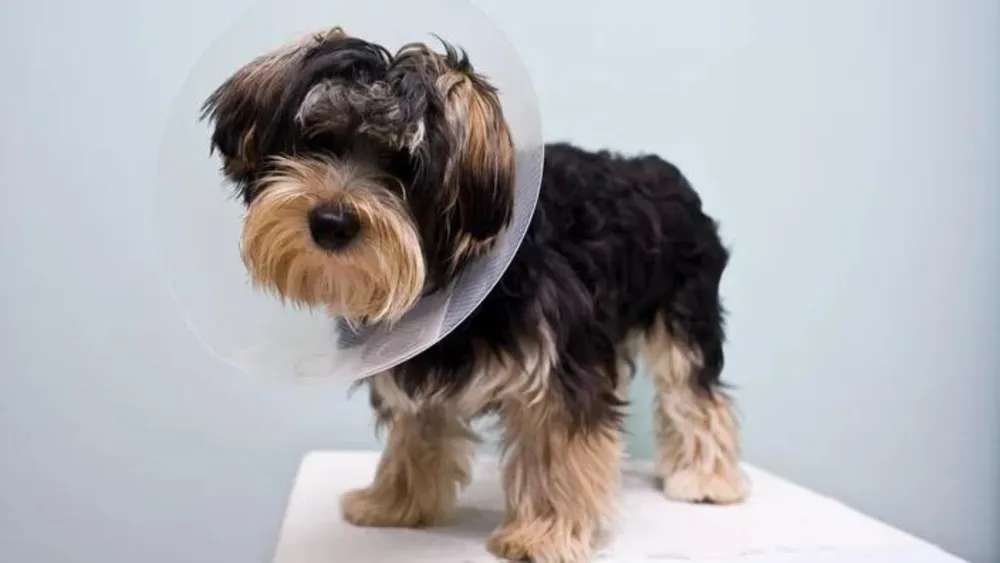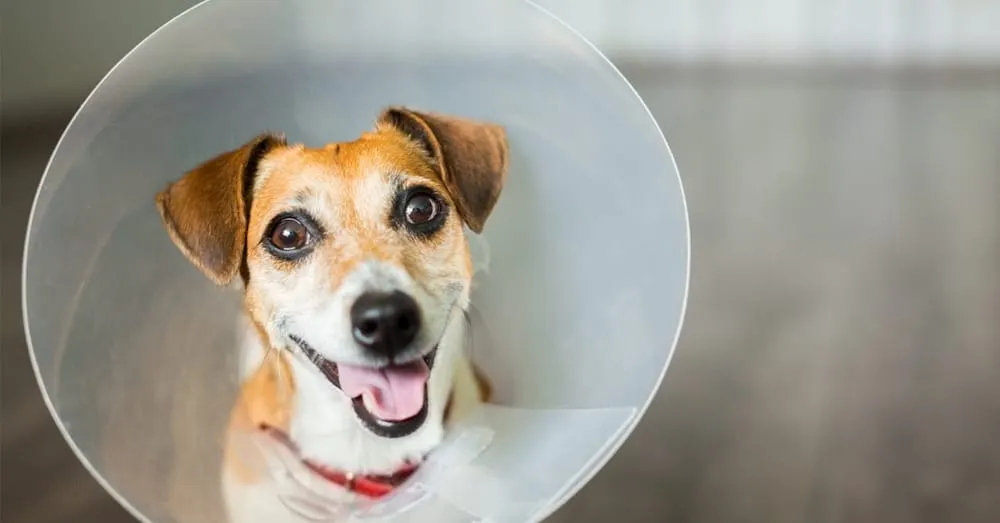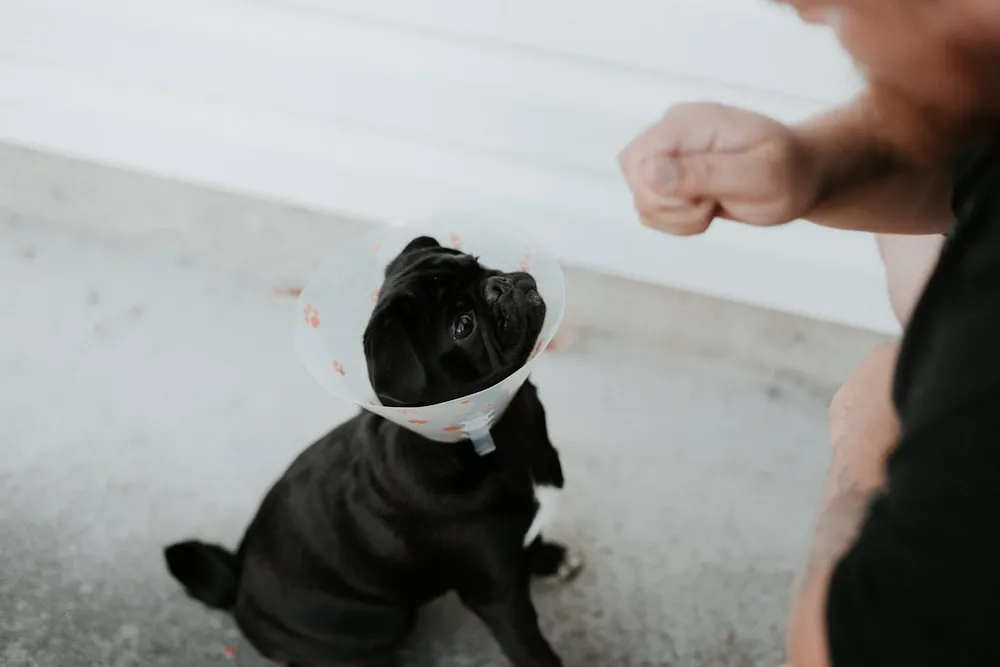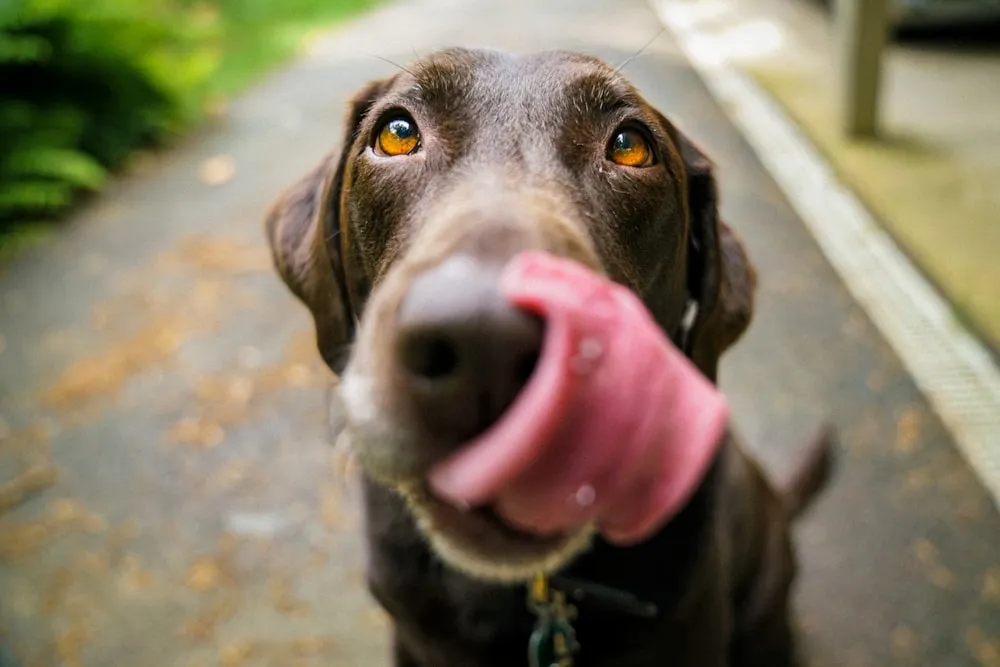Spaying your dog is a responsible decision that promotes their long-term health and well-being while contributing to pet population control. This surgical procedure offers numerous benefits, including the prevention of unwanted litters and the reduction of health risks.
However, the decision to spay comes with financial considerations. Costs can vary based on factors like location, the type of facility, and your dog's specific needs. In this article, we explore the intricacies of spaying, from its health and ethical aspects to the factors affecting its costs, empowering pet owners to make informed choices for their furry companions.

What is Spaying?
Spaying, medically known as ovariohysterectomy, is a surgical procedure performed on female dogs to remove their reproductive organs, specifically the ovaries and uterus. This operation is a common veterinary practice aimed at preventing dogs from becoming pregnant, thereby contributing to the control of the pet population and enhancing the health and longevity of our canine companions.
The spaying procedure involves a veterinarian making a small incision, typically in the dog's abdominal area, through which the ovaries and uterus are carefully removed. The surgery is conducted under general anesthesia to ensure the dog experiences no pain during the process. After the reproductive organs are removed, the incision is closed with stitches. The procedure is relatively straightforward and is considered routine by veterinary professionals. However, as with any surgical operation, it requires careful post-operative care to ensure a smooth and healthy recovery.
It's important to distinguish spaying from neutering, as the terms are often used interchangeably but refer to different procedures. Neutering, or castration, is the surgical removal of a male dog's testicles and is the equivalent procedure for male dogs. While both spaying and neutering are sterilization procedures aimed at preventing reproduction and offering similar health and behavioral benefits, the specific surgical techniques and physical implications for the dog differ due to their distinct reproductive anatomy.
By understanding the nuances between spaying and neutering, pet owners can better appreciate the specific care and considerations each procedure entails for their furry friends. Both practices play a vital role in responsible pet ownership, significantly contributing to the welfare of individual pets and the broader canine community by preventing overpopulation and its associated challenges.
Benefits of Spaying Your Dog
Spaying your dog offers a myriad of benefits that extend beyond the immediate prevention of unwanted puppies. These advantages are significant for both the dog's health and behavior, as well as for broader societal and ethical considerations.
Health Benefits
- Reduced Risk of Certain Cancers: Spaying dramatically lowers the risk of mammary gland tumors, which are malignant in about 50% of dogs. It also eliminates the risk of ovarian and uterine cancers, which can be life-threatening and require extensive treatment.
- Elimination of Heat Cycles: Heat cycles bring discomfort to female dogs and can attract unwanted attention from male dogs. Spaying eliminates heat cycles, making your pet more comfortable and less stressed.
- Prevention of Pyometra: Pyometra is a serious and potentially life-threatening infection of the uterus that can occur in unspayed females. Spaying removes the risk of this condition entirely.
- Longer Lifespan: Studies have shown that spayed dogs tend to live longer, partly due to the reduction in risks associated with reproductive system diseases.
Behavioral Benefits
- Reduced Aggression: Spaying can lead to a reduction in certain aggressive behaviors. Without the hormonal fluctuations associated with the reproductive cycle, spayed dogs may exhibit less dominance or territorial aggression.
- Decreased Roaming: Unspayed females often roam in search of a mate, which can lead to accidents or getting lost. Spaying eliminates the drive to roam, keeping your dog safer at home.
- Less Marking and Mounting: Though more common in males, females may also exhibit these behaviors, especially during heat cycles. Spaying can reduce or eliminate such actions.
Impact on Pet Overpopulation and Ethical Considerations
- Control of Pet Population: Millions of dogs are euthanized annually due to overpopulation. By spaying your dog, you're directly contributing to the solution, ensuring fewer unwanted puppies are born into potential neglect or abandonment.
- Reduction in Stray Animals: Spaying helps reduce the number of dogs that end up as strays, which often suffer from poor health, hunger, and accidents.
- Ethical Responsibility: Pet owners have an ethical responsibility to prevent their pets from contributing to the overpopulation crisis. Spaying is a proactive step in being a responsible pet owner and a compassionate member of the community.
Spaying your dog is a decision that offers profound health and behavioral benefits for your pet while also addressing critical ethical and societal issues related to pet overpopulation. It's a choice that reflects care for your dog's wellbeing and a commitment to responsible pet ownership.

Factors Influencing Spaying Costs
The cost of spaying your dog can vary significantly based on several factors. Understanding these can help you anticipate the expenses and make informed decisions regarding the procedure. Here's a breakdown of the primary elements that influence spaying costs:
Geographic Location
The cost of living in different regions directly impacts veterinary services, including spaying. In urban areas or regions with a higher cost of living, veterinary clinics often charge more due to higher operational costs, such as rent, utilities, and staff salaries. Conversely, in rural areas or regions with a lower cost of living, you might find the costs to be somewhat lower. This variation is a reflection of the economic conditions of each area and how they affect the pricing of veterinary services.
Type of Clinic or Veterinary Hospital
The choice of facility can also significantly affect the cost of spaying your dog. Private veterinary practices may offer more personalized care but often come with a higher price tag due to the quality of services, the expertise of the veterinary staff, and the equipment used. On the other hand, animal shelters and non-profit clinics frequently provide low-cost spay/neuter programs as part of their mission to control the pet population and ensure that financial constraints do not prevent pet owners from accessing necessary services.
Dog's Size, Age, and Health Status
The physical characteristics and health condition of your dog play a crucial role in determining the cost of the spaying procedure. Larger dogs require more anesthesia and often more time and resources to safely complete the surgery, leading to higher costs. Similarly, older dogs or those with pre-existing health conditions may require additional pre-operative tests and post-operative care to mitigate any risks associated with anesthesia or surgery, further increasing the price. Young, healthy dogs typically represent the lowest risk and, consequently, the lower end of the cost spectrum.
Additional Medical Procedures
It's common for veterinarians to recommend or require additional medical procedures to be performed concurrently with the spaying operation. These can include vaccinations, microchipping, and comprehensive health screenings or blood work to ensure the dog is fit for surgery. While these services add to the overall cost, they are crucial for maintaining your dog's health and can be more convenient and economical when done together with the spaying procedure.
Understanding these factors can help you navigate the cost landscape of spaying your dog. It's always a good idea to discuss all these aspects with your veterinarian to get a detailed estimate tailored to your dog's specific needs and circumstances, allowing you to plan accordingly for this important investment in your pet's health and well-being.

Average Cost Range for Spaying
The average cost range for spaying a dog can vary widely, typically falling anywhere between $50 to over $500. This broad spectrum is influenced by the factors previously discussed, such as geographic location, the type of clinic, and the specifics of the dog being spayed. To understand why there's such a wide range in costs, it's helpful to break down the typical expenses involved in the spaying process:
Breakdown of Typical Costs
- Surgery: The surgical procedure itself is the most significant portion of the cost. This includes the time and expertise of the veterinarian and the surgical team.
- Anesthesia: General anesthesia is required to ensure the dog is unconscious and pain-free during the procedure. The cost can vary based on the dog's size and the duration of the surgery.
- Post-Operative Care: After the surgery, your dog will need to be monitored as she recovers from the anesthesia. This might include pain relief medication and a follow-up visit to remove stitches or check on the healing process.
- Facility Fees: These cover the use of the clinic's space, equipment, and supplies necessary for the procedure.
- Additional Procedures: As mentioned earlier, many veterinarians recommend or require other procedures to be done concurrently with spaying, such as vaccinations or microchipping, which add to the overall cost.
Low-Cost Spaying Options
For those seeking affordable spaying options, numerous resources are available to help ease the financial burden. Subsidized programs, non-profit organizations, and low-cost clinics offer spaying services at reduced rates, thanks to funding from donations, grants, and community support. To find these options:
- Online Research: Search for "low-cost spay services" plus your location.
- Local Animal Shelters: They often have information on affordable spay options.
- Veterinary Associations: Check for lists of clinics offering reduced rates.
- Income Qualification: Some programs offer discounts based on income.
- Special Promotions: Look out for events like "Spay Day" for extra savings.
Exploring these avenues can lead to significant savings on spaying procedures, ensuring your pet's health and wellbeing without overextending your budget.

Preparing Your Dog for Spaying
Preparing your dog for spaying involves a few essential steps to ensure a smooth and successful procedure. Here's what you need to know:
Pre-Operative Instructions
- Fasting: Your veterinarian will provide specific fasting instructions for your dog. Typically, dogs are required to fast for a certain period before surgery, usually starting the night before. Fasting helps reduce the risk of complications during anesthesia and surgery. It's essential to follow these instructions carefully, as any food or water in your dog's stomach can pose risks during the procedure.
- Pre-Surgery Check-Up: Before the actual surgery date, your dog will likely have a pre-surgery check-up. During this appointment, the veterinarian will examine your dog's overall health, ensuring she is fit for the procedure. If any health concerns are identified, they will be addressed, and the surgery may be rescheduled if necessary.
What to Expect on the Day of Surgery
- Arrival and Admission: On the day of surgery, you'll need to bring your dog to the veterinary clinic at a specific time as instructed. Upon arrival, your dog will be admitted to the clinic, and you'll need to complete any necessary paperwork.
- Anesthesia: Your dog will be prepared for surgery by receiving a pre-operative sedative to help her relax. Once she's calm, the veterinary team will administer general anesthesia to induce unconsciousness and pain relief. Your dog will be continuously monitored throughout the procedure to ensure her safety.
- Surgery: The actual spaying procedure will take place once your dog is under anesthesia. The surgeon will make a small incision in her abdominal area to remove the ovaries and uterus. The surgery is conducted with precision and care.
- Post-Operative Monitoring: After the surgery, your dog will be moved to a recovery area where she'll gradually wake up from anesthesia. Veterinary staff will closely monitor her vital signs and ensure she's comfortable.
- Recovery and Discharge: Once your dog is awake and stable, you'll be informed, and you can typically pick her up on the same day. The veterinary team will provide post-operative care instructions, which may include guidelines for pain management, wound care, and dietary restrictions during the recovery period.
- Follow-Up Appointment: It's essential to attend any scheduled follow-up appointments to assess your dog's healing progress and ensure there are no complications.
Preparing your dog for spaying and understanding what to expect on the day of surgery is crucial for both her wellbeing and your peace of mind. Following pre-operative instructions and being prepared for the surgery day will help ensure a safe and successful procedure.
Post-Operative Care and Recovery
Post-operative care and recovery following spaying are critical to ensure your dog heals properly and experiences minimal discomfort. Here's a guide to what you can expect during this crucial period:
Immediate Post-Surgery Care
- Monitoring: Immediately after the surgery, your dog will be closely monitored by the veterinary staff. They will keep a watchful eye on her vital signs, including heart rate and breathing, to ensure she's recovering smoothly from anesthesia.
- Pain Management: Pain relief is essential for your dog's comfort during the recovery process. Your veterinarian will prescribe pain medications that you should administer as directed. Never give your dog any over-the-counter pain medications without consulting your veterinarian.
- Keeping the Dog Calm: It's important to keep your dog calm and prevent excessive activity in the initial recovery phase. Rest is crucial to prevent strain on the surgical site and minimize the risk of complications.
Home Care
- Wound Care: Your veterinarian will provide instructions on how to care for the surgical incision. This typically involves keeping the incision site clean and dry. Avoid allowing your dog to lick or chew the incision, as this can lead to infection or injury. In some cases, an Elizabethan collar (cone) may be recommended to prevent your dog from reaching the incision.
- Activity Restrictions: Your dog should have limited physical activity during the initial recovery period, usually for about 7-14 days. This means no running, jumping, or strenuous exercise. Leash walks for bathroom breaks are usually acceptable, but consult your veterinarian for specific guidelines based on your dog's condition.
- Dietary Considerations: Your veterinarian may recommend dietary adjustments during recovery. Some dogs may have a reduced appetite immediately after surgery, but they should return to their normal eating habits within a day or two. Ensure that your dog has access to fresh water at all times.
- Monitoring for Complications: Keep a close eye on your dog for any signs of complications. These may include excessive swelling, discharge from the incision, increased redness, signs of infection (fever, lethargy, loss of appetite), or behavior changes. If you notice any concerning symptoms, contact your veterinarian promptly.
- Follow-Up Appointments: Attend all scheduled follow-up appointments with your veterinarian. These visits allow the vet to assess the incision site, remove any stitches or staples if necessary, and ensure that your dog is healing as expected.
Remember that every dog's recovery timeline can vary, so it's essential to follow the specific post-operative care instructions provided by your veterinarian. By providing attentive care, you can help your dog recover comfortably and ensure a successful healing process after spaying.

Conclusion
Understanding the costs of spaying your dog is not just about budgeting; it's a fundamental step in responsible pet ownership. By comprehending the financial aspects and exploring low-cost options, you ensure that your beloved companion receives the essential health benefits of spaying while also contributing to the ethical responsibility of pet population control. Spaying your dog is an act of care and compassion, promoting both her wellbeing and the welfare of animals in your community.
FAQs
- How much does it cost to spay a dog on average?
- The average cost of spaying a dog can vary widely, typically falling anywhere between $50 to over $500. The exact cost depends on factors like geographic location, the type of clinic or hospital, your dog's size, age, and health status, as well as any additional medical procedures performed alongside spaying.
- Are there any low-cost spaying options available in my area?
- Yes, there are often low-cost spaying options available. You can research online for local subsidized spay programs, non-profit organizations, and low-cost clinics that offer reduced-rate spaying services. Contacting your local animal shelters or veterinary associations can also provide information on affordable options in your area.
- What are the health benefits of spaying my dog?
- Spaying offers several health benefits for your dog, including a reduced risk of certain cancers, elimination of heat cycles, prevention of uterine infections, and longer overall lifespan. It also contributes to a healthier and happier life for your pet.
- At what age should I spay my dog?
- The optimal age for spaying can vary by breed and individual dog. In general, veterinarians often recommend spaying before the first heat cycle, typically between 6 to 9 months of age. However, it's essential to consult your veterinarian for guidance tailored to your dog's specific circumstances.
- How can I prepare my dog for spaying surgery?
- To prepare your dog, follow the pre-operative instructions provided by your veterinarian. This usually involves fasting your dog the night before surgery and ensuring she receives a pre-surgery check-up. Following these instructions carefully is crucial for a successful procedure.
- What is the difference between spaying and neutering?
- Spaying is the surgical removal of a female dog's reproductive organs (ovaries and uterus), while neutering is the surgical removal of a male dog's testicles. Both procedures aim to sterilize the dog and offer health and behavioral benefits.
- Is it safe to spay older or larger dogs?
- Yes, it is generally safe to spay older or larger dogs. However, these dogs may have specific considerations, such as a longer recovery period or increased attention to post-operative care. Your veterinarian will assess your dog's individual health and provide guidance on the safety of the procedure.